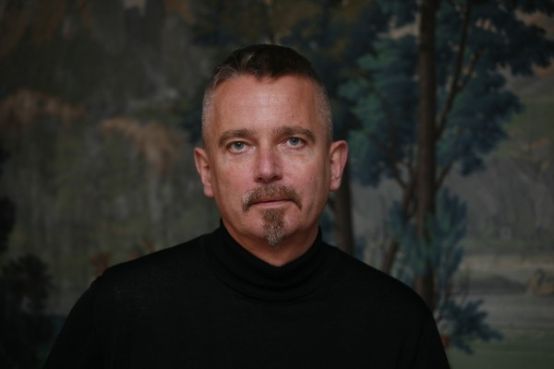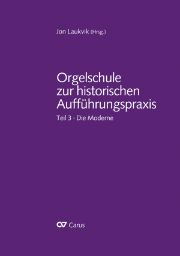Organ school for professionals
The third volume of Jon Laukvik's standard work on historical performance practice deals with modernism.

Following the volume on Baroque and Classical music and the one on Romanticism - which have already become indispensable standard works - Jon Laukvik, professor at the Stuttgart Academy of Music, is now publishing the third and final volume of his Organ school for historical performance practice before. It is not a school in the strict sense of the word, aimed at beginners, but a highly comprehensive teaching, study and reference work for advanced players, who will find valuable information, source texts and practical suggestions on various aspects of historically informed musical practice, which - unlike other books of this kind - is also extended to the music of the 19th and, in this case, even the 20th and 21st centuries.
For this volume, Laukvik has engaged various co-authors for contributions (some of which are naturally highly subjective) on their respective areas of specialization. Armin Schoof begins by writing about German-Austrian neoclassicism using the examples of Distler, Hindemith, David and Hessenberg, i.e. four composers whose aesthetics a priori already diverge very strongly, while other important names (Reda, Bornefeld) are somewhat missing. In Jeremy Filsell's contribution on Marcel Dupré, the "hagiographic" aspect somewhat dominates the critical examination of this formative, but also very controversial figure of early French modernism; one is also annoyed by some translation style blooms in this otherwise extremely carefully designed book ("toes" in the context of pedal playing are not the toes, but the tips of the feet). Hans Fagius' contribution on Maurice Duruflé provides some interesting insights into the work of the self-critical master, supplemented by brief personal memories of Fagius' lessons with Duruflé.
The first highlight of the book follows on almost 150 pages, an essay on Olivier Messiaen written by Hans-Ola Ericsson, Anders Ekenberg and Markus Rupprecht. A general introduction provides the most important information about the composer's life and work, the most important parameters of his composing (rhythm, modality, harmony) and his use of the organ in terms of registration, articulation and tempo. This is followed by extensive individual considerations of the various works, which also contain very practical, at times perhaps even (at least for the French-trained reader) somewhat "technical" suggestions for realization, even for "non-style" instruments, and valuable practice tips. Together with comparable publications by Olivier Latry and Loïc Mallié (L'oeuvre d'orgue d'Olivier Messiaenalso with Carus), Jon Gillock (Performing Messiaen's Organ MusicIndiana University Press) or the recently deceased Almut Rössler, this contribution is likely to become an extremely important source of information on Messiaen, all the more so as all the authors mentioned had worked intensively with the composer.
Guy Bovet's contribution on Jehan Alain is based primarily on the first editions of his works from 1939 - 1945, which are still free of later editorial additions by other family members (such as the Leduc edition of 1971) or compile different versions (Bärenreiter), thus encouraging a textual examination of the composer. Laukvik's book then reaches its absolute peak with two essays by Bernhard Haas, one on the organ music of Schönberg, Milhaud and Kodály, the other on key works of the last 60 years (arranged according to level of difficulty). Haas' concise and well-founded analytical remarks, his working and practice notes, which have been shaped by years of immersion in these works, including extensive text corrections, but also the colorful sensuality of his work descriptions are undoubtedly among the best that has been published in recent years on the subject of new organ music. With short commentaries on other works and a supplementary list of recent compositions, Haas also succeeds in providing a survey of works that is hard to beat in terms of topicality and is not limited to a specific language area, and which should be recommended to every professional organ player as compulsory reading for personal further training.
Conclusion: With this third and final volume, Jon Laukvik's organ school has once again been enriched by an essential element and can be recommended in every respect as a reading and study book that belongs in every organist's library!
Organ school for historical performance practice - Part 3: The modern era, edited by Jon Laukvik, 352 p., € 80.00, Carus-Verlag, Stuttgart 2014, ISBN 978-3-89948-227-0








